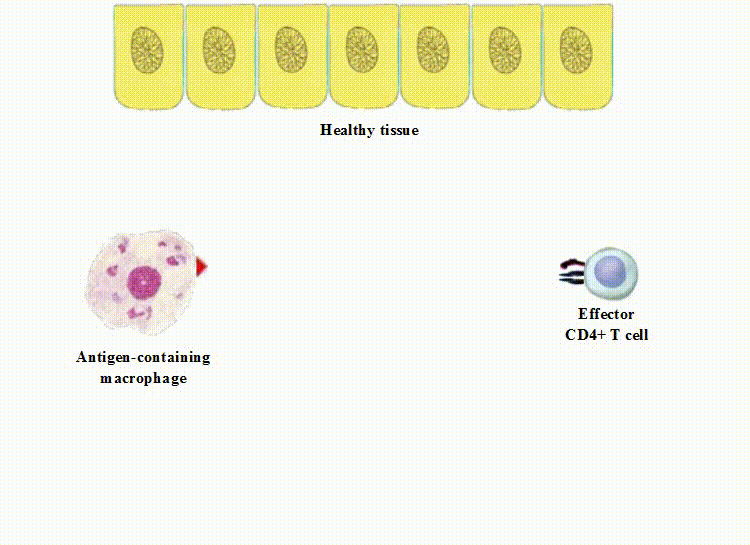|
|

ADAPTIVE IMMUNE RESPONSES
T-Cell Effector Activity
T-cell effectors are the final stage of T-cell maturation. They destroy cells infected by viruses and other intracellular microbes. Cytotoxic CD8+ T cells and inflammatory CD4+ T cells display different mechanisms of actions, which include (1) apoptosis in target cells by CD8+ T cells, and (2) immune inflammation induced by CD4+ T cells. Both mechanisms involve the participation of cells of innate immunity, such as NK cells, macrophages, etc.
1. Apoptosis
performed by cytotoxic CD8+ T cells triggering cell destruction and cell death engages (i) perforin, a protein that perforates the target cell membrane; (ii) granzyme, a protease made by perforin and injected into pores; and (iii) caspases, which become active through partial degradation by granzyme, constitute caspase cascade. For CD8+T-cell-mediated cytotoxicity, FasL-Fas (CD95) dependent pathway of apoptosis is not essential. Engaged by some cytokines and activated by IFNs and other cytokines, NK cells exert similar cytotoxicity via apoptosis. Macrophages also contribute directly to this effector mechanism by cytotoxic activity through molecules found on the cell surface or ROS including nitric oxide released from themselves.
2. Immune inflammation
is induced by inflammatory CD4+ T cells, which preveously activate macrophages. The macrophages secrete a variety of cytokines and mediators and recruite other cell types to the site of inflammation. Potential of own tissue injury occurs.
